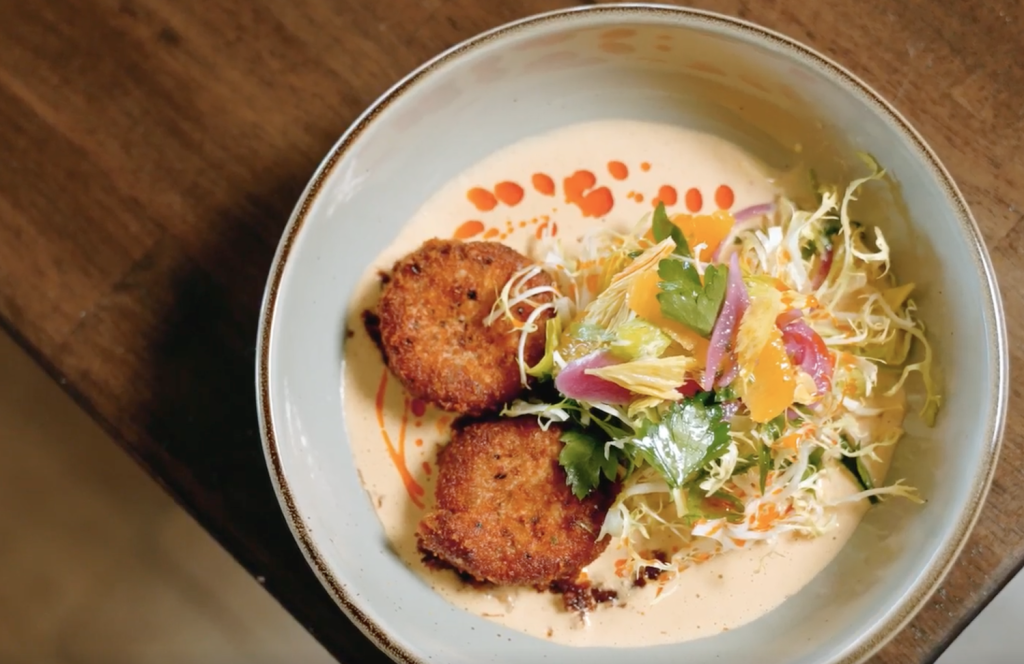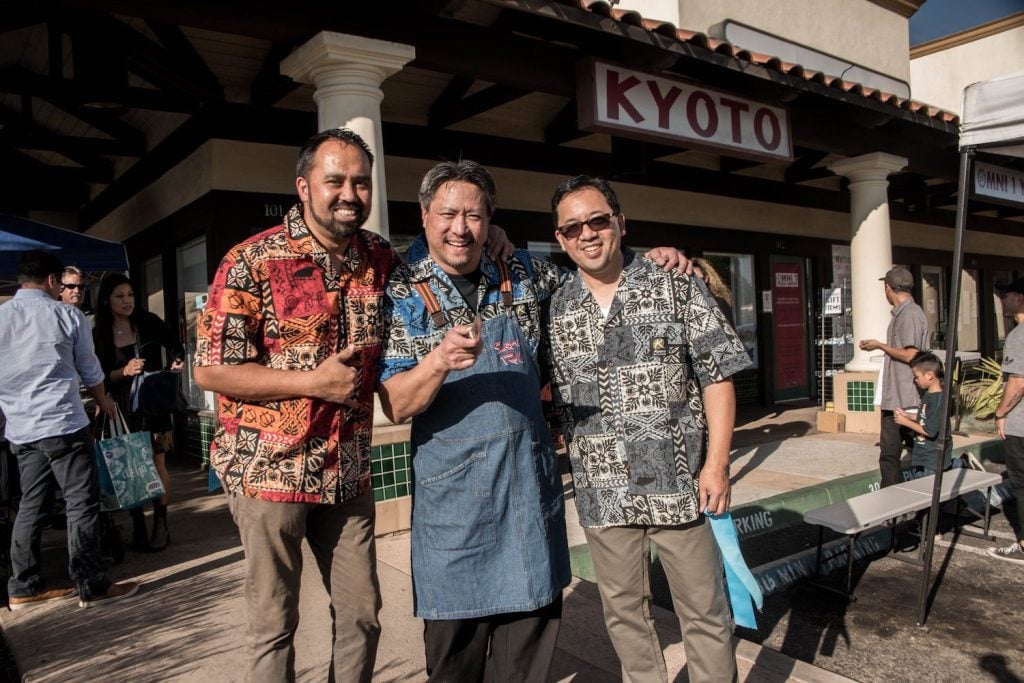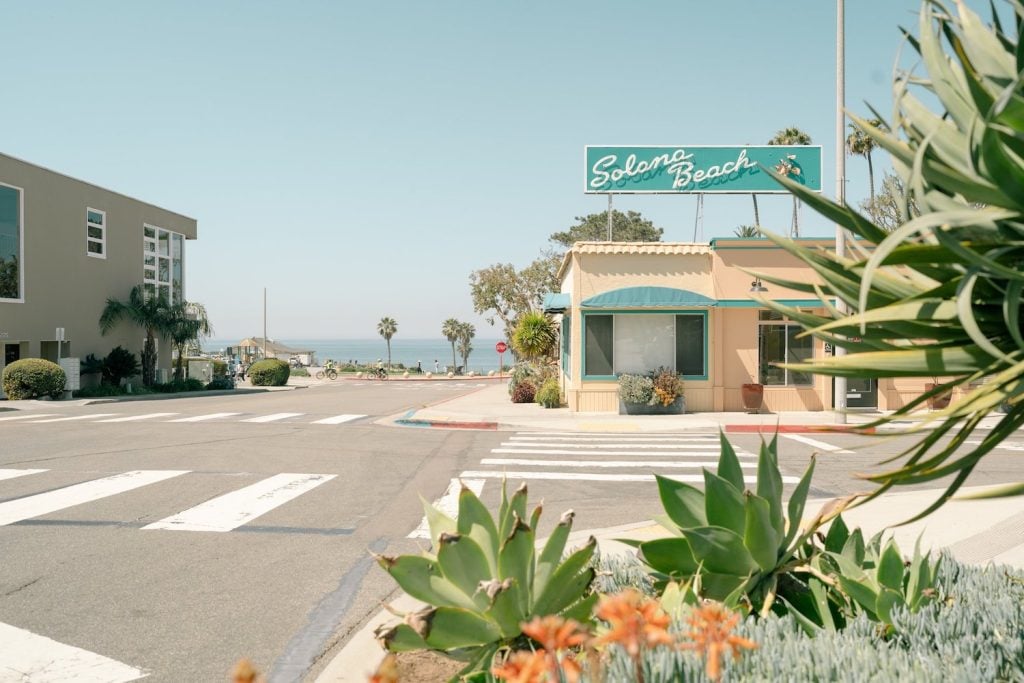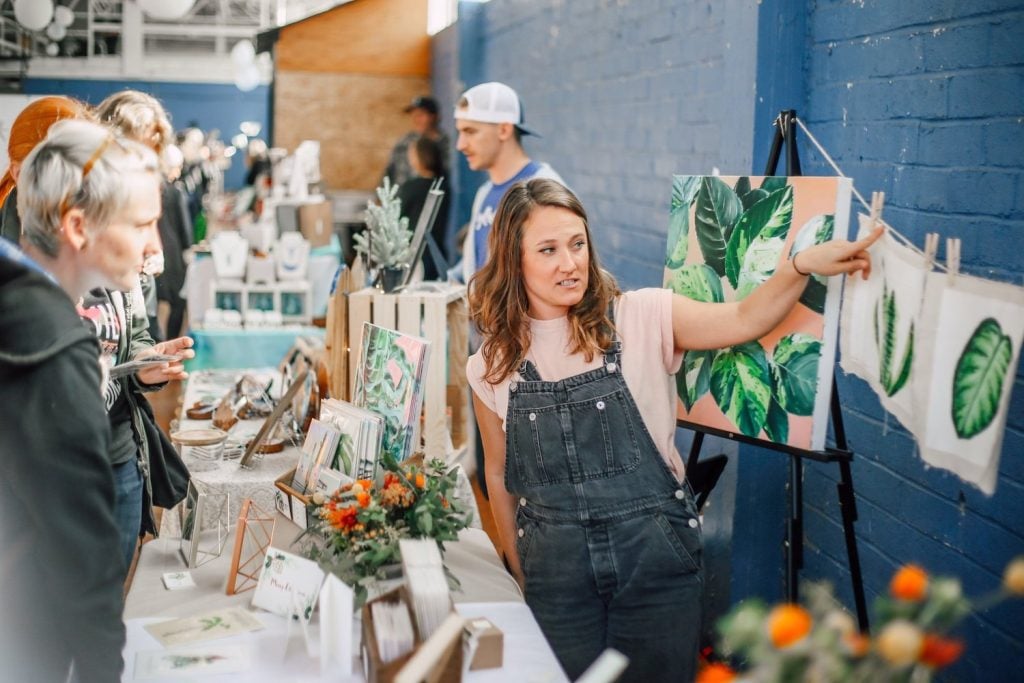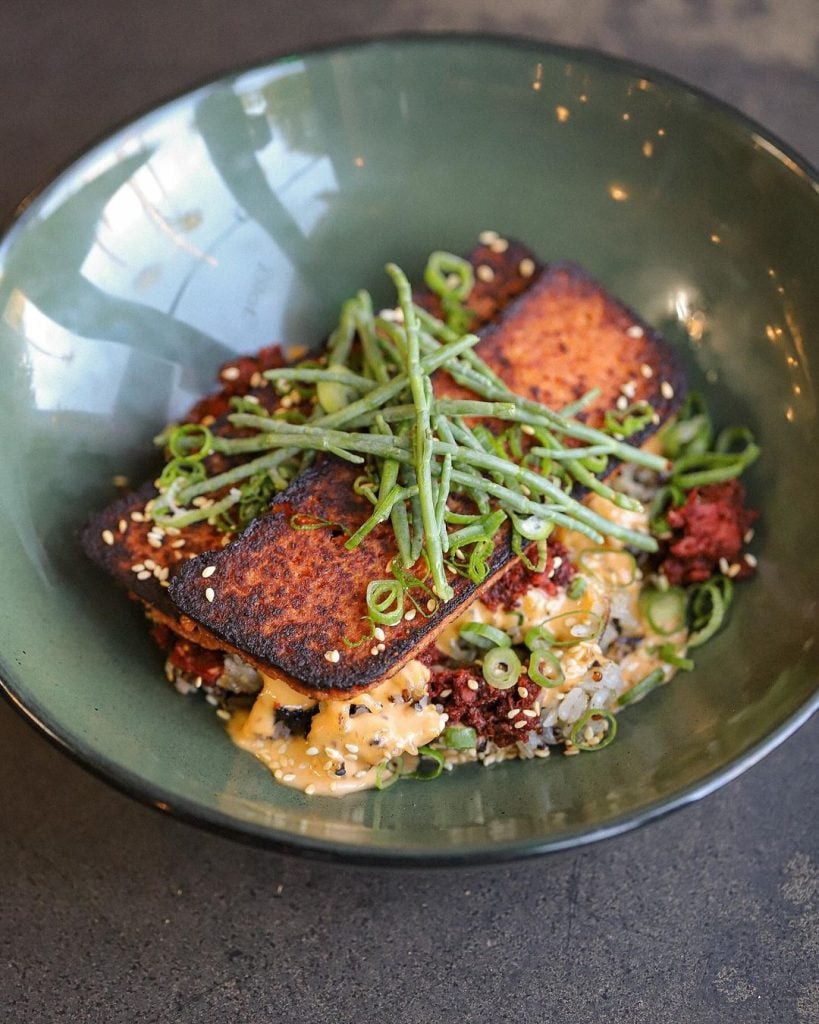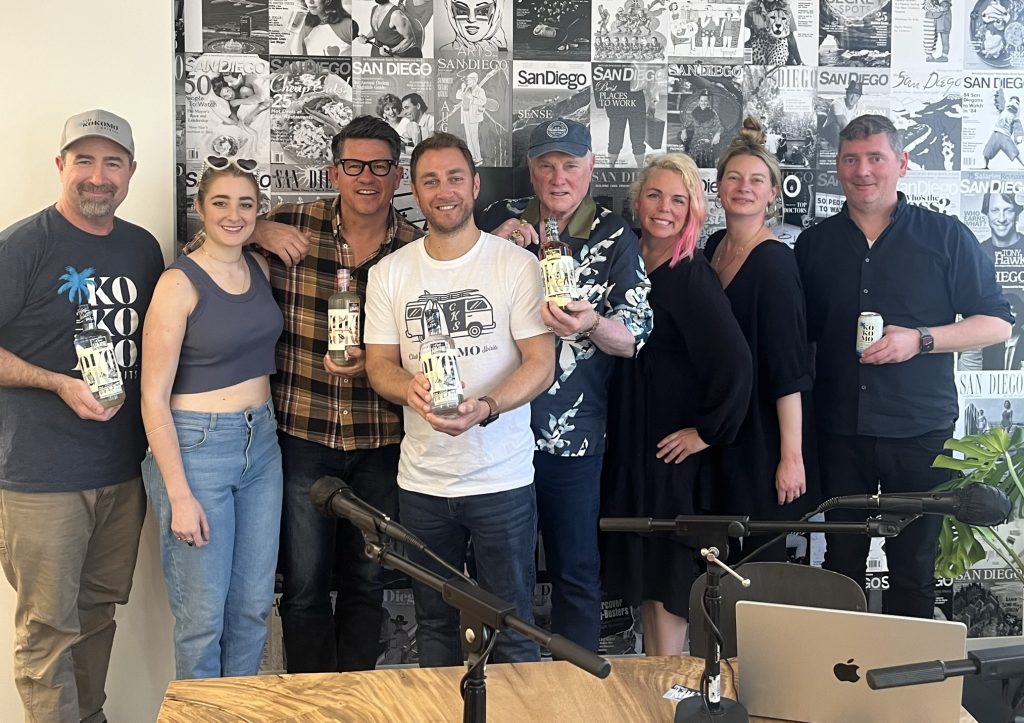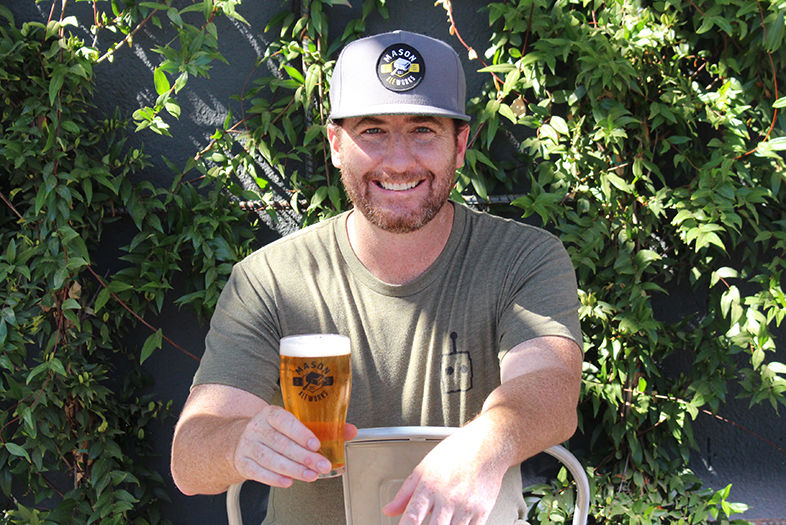He works in what is essentially a brewer’s Disneyland: Matt Webster, Director of Brewery Operations for Mason Ale Works, oversees a 15-barrel brewhouse set inside an airplane hangar-like building that is home to a huge restaurant, a humongous bar, and an eight-lane bowling alley (with its own separate bar). It’s a fun and lively setting, with lots of recreational temptations, but Matt doesn’t let those things distract him from his main task. Matt is there to make sure the beer gets made.
There’s an awful lot of beer to be made these days. The shiny new brewery in San Marcos currently supplies all the Urge Gastropubs (and Brothers Provisions) with a wide variety of Mason Ale Works beers, in addition to packaging for numerous retail venues throughout Southern California. I sat down to chat with Matt about the many factors that determine what he brews and how it feels to brew inside such a beer-and-food-centric restaurant group.
Let’s start with a little background and some detail on your previous life. How did you get into brewing?
When I got out of high school, I joined the Marine Corps and did four years in the Marine Corps Infantry. I got out in 2005, moved back home to Denver, and got my undergrad degree, but I didn’t know what I wanted to do. I started homebrewing at the time and I realized I really liked doing it. When I graduated, I sent a resume to every brewery in the country and I got a job working at North Coast Brewing up in Fort Bragg, California. So I started there, just working my way up; keg washer to cellarman to brewer to supervisor. I was there for two years and then I moved down here to San Diego and took the lead brewer job at Lost Abbey. I spent five years there, three of which I was the head brewer. Then I actually got out of beer and went to get my MBA, which I’m finishing up right now. I was actually out of the beer industry when Grant [Tondro, co-owner] approached me about doing this. So he dragged me back in!
Where are you doing your MBA?
University of San Diego.
And you’re almost done with that?
I have one semester to go.
So Grant came and found you?
I’d actually never met Grant. Grant knew my wife pretty well, and the head brewer for Mason in Oceanside at the time was Mike Rodriguez (formerly of Lost Abbey) and he was actually the person I succeeded at Lost Abbey. He called me and told me they were building this big brewery here in San Marcos and asked if I wanted to come and take a look at this job.
And what did Grant say to you that made you say yes to getting back into brewing?
A couple of things. I was onboard with the general direction that Grant wanted to go, with the four core beers and doing fun stuff in Oceanside. But really it was about a reasonable growth plan—with the Type 75 license we have, every location is capped in terms of production at 5,000 barrels—and I had spent most of my time working at breweries where it was all just about growing and growing and growing. Once you’d hit that growth number, it had moved another five thousand barrels. So that’s not what I wanted to do; I didn’t want to constantly be chasing more and more sales. Now, part of my job now is chasing sales, but when there’s that cap, it’s very attractive to me.
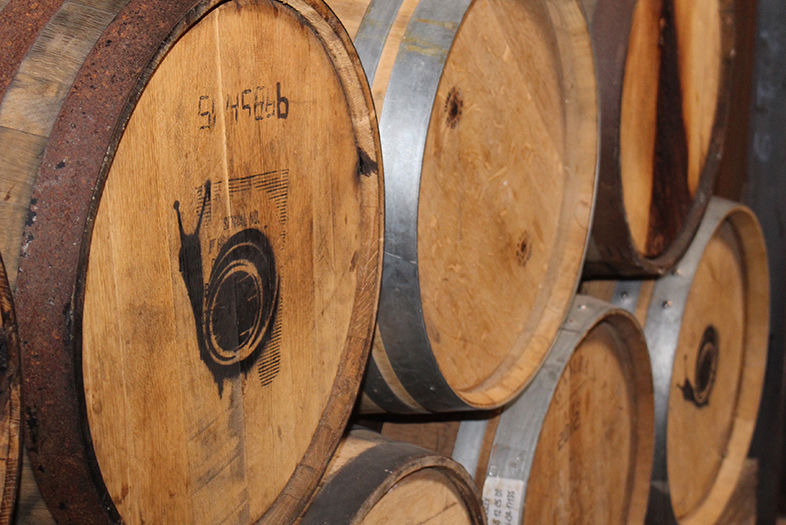
Have a Beer with Mason Ale Works Director of Brewery Ops Matt Webster
The MAW barrel program, called Snale Works, produces beers in Oceanside as well as San Marcos. | Photo: Nate Glassman-Hughes
In terms of what we produce, we’re going to try to keep as much of the core production as possible out here in San Marcos, with the big seasonal releases coming out of here. And then Oceanside will be R&D and one-off specialty stuff. With the Snale Works program, we’ll keep all the clean Snale Works beer out here in San Marcos and then all the funky Snale Works stuff will come out of Oceanside.
And you’re well versed in the world of funky stuff, right?
I’ve put some beer in wood before, yeah!
You know Brett?
I know Brett! He’s a good buddy of mine!
So your big focus here, along with supplying the restaurant, is pushing distribution in cans, is that right?
Yeah, with Stone we have San Diego, Orange County, and L.A. We just signed with a small distributor in Phoenix, and our first shipment recently went out to them. We’re looking around—we want to get into the Central Coast and maybe the Bay Area. It would be good to just get a small footprint in those markets.
Is Stone getting you draft accounts and into bars around town?
They are, but I kind of feel like everybody is fighting the same thing right now, which is the rotating tap handles. I kind of joke with Grant because, with Urge RB, he kind of created this monster, but it’s really hard to develop any brand loyalty when all the retailers have rotating handles. That big article you did with Karen Barnett about how all the bar owners in North Park are unhappy with all the tasting rooms: I completely get her point because she’s seeing her sales drop. Everybody’s seeing their sales drop. Breweries. Bars. Tasting rooms. And it’s really difficult (for a brewery) to develop that brand loyalty unless you can get steady tap handles. And that’s part of the reason you’re seeing everybody jumping on the idea of opening tasting rooms. They’re trying to develop some brand loyalty out there.
Aside from the four core beers, talk a little bit about what else you’re looking to do with the brew program here.
We have the four core beers: the IPA [Jambi], the Red IPA [Charley Hustle], the Imperial Coffee Stout [Cash], and the Wit beer [Willy Time]. We’d really like Willy to sell more. It’s funny because Willy is the best-selling draft brand that we have but the worst-selling can brand.
Why do you think that is?
Part of it is that wit beers haven’t traditionally been great in a packaged concept—outside of a few really high profile ones like White Rascal and St. Archer. It’s such a defined consumer for that. I think the reason it does really well in draft is that it can get into accounts that wouldn’t normally carry a craft line, like the hotels and the chain restaurants. It can get into that door. And it’s very approachable and a very food-friendly beer. The reason I think it doesn’t do very well in the can format is that we’re a relatively unknown brewery and, for the majority of consumers that buy unknown beer products, it’s probably not their style.
So are there other styles you’re looking to do?
Well, we just released, on a large level, our Mexican lager, which—when we have it on draft—is the second-best seller in all of our places.
What’s that called?
Respeto. That’s going to be exciting moving forward because that beer is a really approachable, easy-drinking beer. I think you’re even finding a lot of dedicated craft consumers reverting back to that style right now because it is so approachable and easy.
That sort of segues to my next question, which is about having a brewery inside a restaurant. With everything that you do, I’m sure you’re very focused on being food-friendly. Given that, what are some of the things you keep in mind while crafting new recipes?
First and foremost, our chefs have a lot of freedom to play with their entrees. I was putting initial thoughts down about the beers I wanted to feature in a beer dinner recently and our chef Brad just said, “Why not Charley Hustle?” And I never think of a red IPA as a good pairing beer but, because it is so unique, you can do very interesting things with it. So there’s a lot of back and forth when new beers are coming out about what the folks in the kitchen would like to see and what would work for them. It’s really nice kicking ideas around with other people who have the sensory understanding and knowledge about how ingredients come together. Plus it’s really nice having access to a kitchen that just has everything. So if we want to try something with an ingredient, we can just go back to the kitchen and chances are it’s back there.
Having the kitchen and the food component right here is probably very different from anything you did at Lost Abbey, right?
You know, this is like a big brewpub in one sense, and I’ve never worked in a brewpub before, I just happened to only work in production facilities during my career. There were a few beers at Lost Abbey that were very pairing/sensory oriented, and a lot of that came about because of Gwen Connolly and her work with pairings. But overall there wasn’t a lot of interaction with chefs collaborating with the beers. It was really about the high-end consumers and what they wanted in their beers.
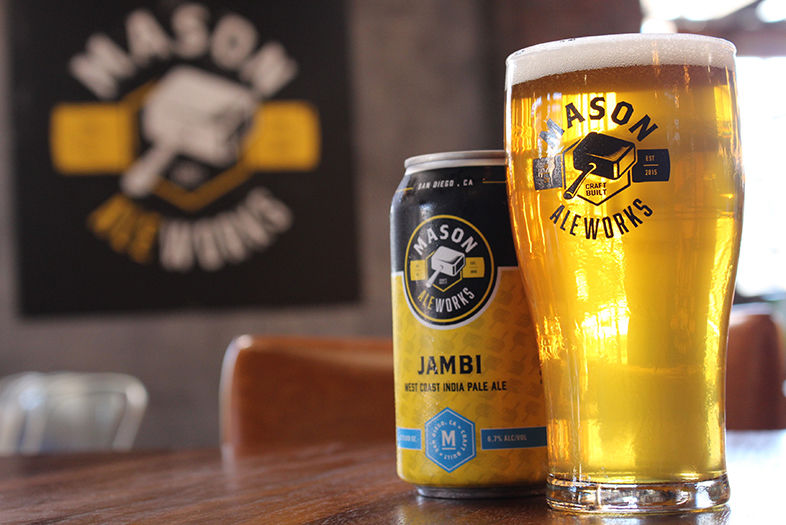
Have a Beer with Mason Ale Works Director of Brewery Ops Matt Webster
Jambi is the signature IPA from Mason Ale Works. | Photo: Nate Glassman-Hughes
Your core beers here are much more basic. Sort of more “working man” approachable, wouldn’t you say?
My philosophy is pretty simple: I want dry beers. That’s the first thing you’ll notice when you go through our lineup. Outside of the Imperial Coffee Stout, everything is very dry. I just want to make the beer as true to the style as I can but still keep it interesting. I think Jambi is a very good example of what a West Coast IPA is now, without looking like a milkshake in a glass. We want to really just make beer that’s as good an example of the style as possible. A lot of other brewers come in and say, “Oh, man! That Charley Hustle is so good!” And the reality is that the recipe is very simple. There have been times in my career where I got very complicated with the way I did things, but the problem with that is—the more you complicate something—the harder it is to replicate. We really just try to simplify the process. In the brewery we don’t pump any product, we don’t filter anything. Just keep the process as simple as possible. I fully believe, with the way this market is changing—and with the shake-up that we believe is beginning—it really will come down to who is just making quality, consistent products. And our push for the next few years is to get the IPA to be a stand-alone thing so, when someone goes into a place and they see Mason Ale works they’ll say, “Oh, they make Jambi.” If we can get enough people to drink the IPA and like it, I’d much rather be known as a brewer who just makes a really good IPA because I think that kind of raises the boat for every other brand you have. I’d rather have that than be known as a brewer that makes a really good peanut butter-and-something. So, we’re trying every day to improve our IPA and make the process for making it as good as it can be. I’m not talking about changing the recipe, I’m talking about how does our process get better. There’s a lot of good homebrewers out there who can write a lot of really killer recipes, but what separates a good brewer from a great brewer is the process he or she uses in doing it.
What separates a good brewer from a great brewer is the process he or she uses in doing it.
Wouldn’t you say another key element in great brewing is consistency? You have to be able to replicate your best beer recipes so they taste the same every time, right?
Right. And there’s a lot of equipment out there that can help you get to that place, but I don’t have a billion dollars or MillerCoors backing me, or a fully automatic 5-barrel pilot system, or the million dollar canning line…I will never work at a brewery that has that stuff.
Because you don’t want to?
Yeah, I don’t want to. But I also think the best beer that can be made is just made simply.
Are you sort of a purist in that you believe the automation takes something away from the beer?
If you gave me an automated system, I’d be happy with it! I don’t like lifting bags just like the next guy, but I think you can make beer that’s just as good without having the automation and, really, I think the automation can kind of cripple you as a brewer because you become dependent on it.
And it decreases the potential of having that “happy accident” right? The one that, by mistake, creates what turns out to be a blockbuster beer?
Right. I can tell you that there are a couple of barrel-aged beers that I’ve done where we said, “Ooops! What are we going to do?” We put them in barrels and checked on them in a year and they turned out to be gold-medal-winners that were some of the most sought-after beers out there.
How about Mason Ale Works? Any specialty beers coming up soon?
We just packaged our first brett beer from Mason Snale Works. It’s a barrel-aged brett saison called Chateau Diane. That’s bottle conditioned in 22-ounce bottles and available sometime this fall exclusively at Brothers Provisions. There will be a bunch of other barrel-aged releases next year as well, including a barrel-aged peach lambic. We have about 60 barrels working out here in San Marcos, and another six in Oceanside. We’re working on growing the program, and the sour side is going to take a little while, but we are looking at putting out at least three barrel-aged offerings a year.
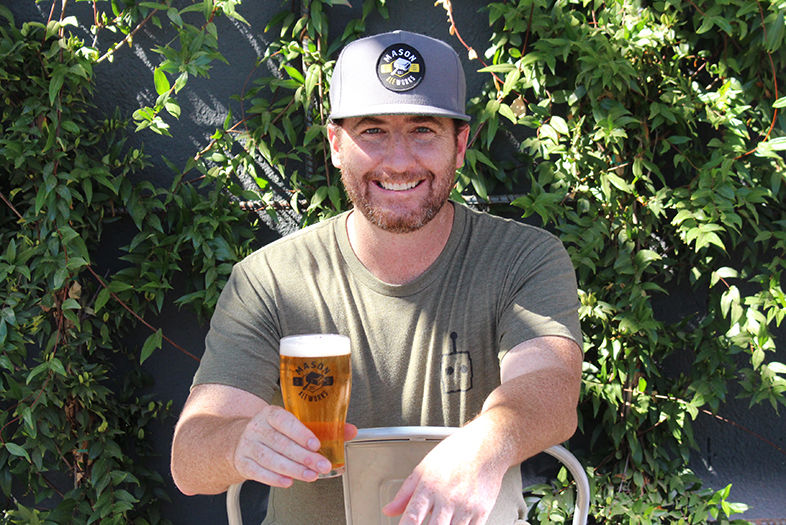
Have a Beer with Mason Ale Works Director of Brewery Ops Matt Webster
Matt Webster is Director of Brewing Operations for Mason Ale Works. | Photo: Nate Glassman-Hughes
